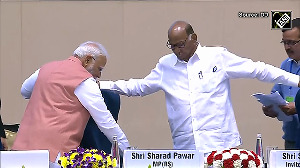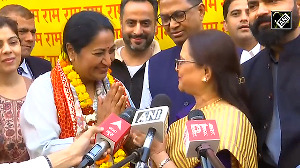Over to the government how they manage the uncertainty of monsoon and revive spending in order to entice RBI for another round of rate cuts
 In his own words, Reserve Bank of India’s governor Raghuram Rajan said that the policy is neither conservative nor aggressive. True, it is more realistic than many would have liked it. Given the room available to him, Rajan has reduced interest rates keeping in mind future food inflation that is likely to only increase. He has also left the door open for future rate cuts, depending on how the monsoon progresses and the government’s response to control food inflation in case monsoon is less than average.
In his own words, Reserve Bank of India’s governor Raghuram Rajan said that the policy is neither conservative nor aggressive. True, it is more realistic than many would have liked it. Given the room available to him, Rajan has reduced interest rates keeping in mind future food inflation that is likely to only increase. He has also left the door open for future rate cuts, depending on how the monsoon progresses and the government’s response to control food inflation in case monsoon is less than average.
Rajan’s commentary is more hawkish than expected, but that seems to be the reality. While markets have taken the recently declared 7.5 per cent growth rate as a sign of improvement, Rajan points out that these includes special factors in the last quarter, including excise taxes and subsidy. If you subtract that, the growth in the last quarter doesn't look as strong as before. He in fact said that growth is weaker than what the headline numbers suggest. There is little sign of a pickup in demand.
By reducing the policy repo rate under the liquidity adjustment facility (LAF) by 25 basis points from 7.5 per cent to 7.25 per cent, Rajan has taken into account the weakening growth rate and balanced it against an expected rise in inflation.
Following are some of the reality checks that the policy highlights
Food inflation
Estimates of Ministry of Agriculture reveal that foodgrains production is already down by more than 5 per cent with successive estimates pointing to a worsening of the situation. To make matters worse, damages have taken place in those crops where buffer foodstocks are not available in the central pool like pulses and oilseeds.
Early estimates of monsoon reveal that the scenario can deteriorate further. Rajan says that the biggest uncertainty is monsoon. If monsoon is better than forecast, the governor is open to a rate cut. However, if not, then government contingency plans for food management will decide future course of action.
Domestic slowdown continues
Slowdown has seeped down to the rural economy. Slowdown in sales of two-wheelers and tractors continues to drag the overall growth of the economy. Corporate sales have contracted but contraction in input costs prevented the slide to be severe at the earnings level.
In April, output from core industries constituting 38 per cent of the index of industrial production declined across the board, barring coal production. Capacity utilisation has been falling in several industries, indicative of the slack in the economy.
International trade contracts
Global slowdown continues to impact Indian exporters. Merchandise export growth has weakened steadily since July 2014 and entered into contraction from January 2015 through April. While the slowdown was not noticeable as the depreciated currency prevented the slowdown to be reflected in rupee terms, Rajan says volumes have started shrinking.
Merchandise imports too turned negative from December 2014 but this was largely on account of low oil imports. Rajan expects the current account deficit to be contained at 1.5 per cent of the GDP this year. Net exports are unlikely to contribute as much to growth going forward as they did in the past financial year.
Three inflation risks
Rajan has highlighted three risks to inflation. First is monsoon. In fact, IMD has lowered India’s monsoon forecast to 88 per cent from 93 per cent after the governor made the policy presentation.
Second risk to the economy is the rising crude oil prices. Crude prices have been firming amidst considerable volatility and geo-political risks. Finally the volatile external environment could impact inflation.
Stress in banking system
Rajan said that banks are aware of the asset quality issues for which the central bank has given relaxations to deal with the issue which needs to be resolved at the earliest. Apart from poor quality of assets, banks would also need fund to grow. Rajan is a worried man because the poor quality of assets is preventing the banks from passing on the rate reduction that he is announcing. After the policy announcement of a rate cut Bank of Baroda official said that they would wait and watch the market before deciding the rate cut.
Why the rate cut?
Despite the lingering issues, Rajan announced a rate cut in the hope that it will be passed on to the economy which is witnessing supply side issues. In his own words, Rajan says he has front loaded a rate cut today and would wait for data that will clarify uncertainty. With low domestic capacity utilisation, still mixed indicators of recovery, and subdued investment and credit growth, there is a case for a cut in the policy rate today, his statement reads.
Rajan is also hopeful that monetary easing can only give government the leg room to increase spending which would in turn bring with it private sector spending. This will be important to relieve supply constraints and aid disinflation over the medium term.
There are signs of a slow pick-up in activity. Upturn in capital goods production seems underway. However clear evidence will come from unclogging of stalled investment projects, stabilising of private new investment intentions and improving sales of commercial vehicles.
Rajan seems to have done his part by announcing the rate cut, it is now up to the government how they manage the uncertainty of monsoon and revive spending in order to entice him for another round of rate cuts.







 © 2025
© 2025